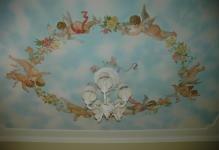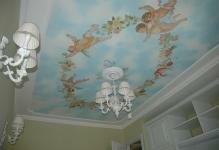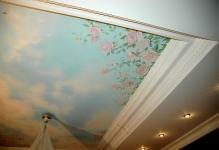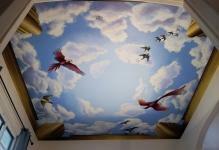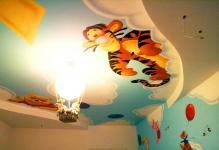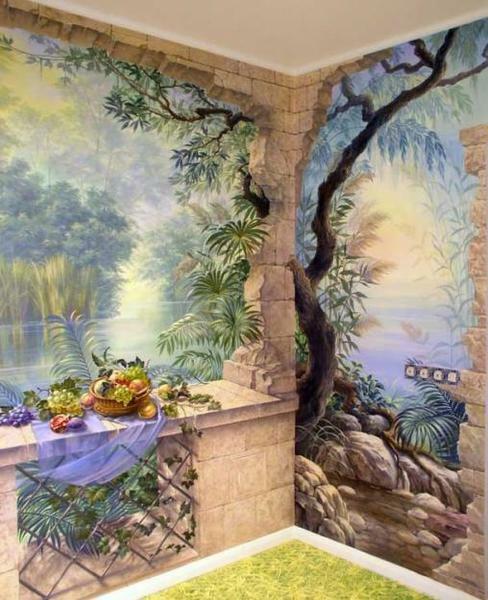 Artistic painting of walls and ceilings gives an opportunity to create a unique and unique interior in the room In an effort to decorate a house people use different finishing methods. Decorative artistic painting of ceilings and walls is a unique method that will help decorate the interior of your apartment. To paint any surface with your own hands is easy. First of all, you need to make a sketch. In this case, it is necessary to take into account the dimensions of the room and the height of the room.
Artistic painting of walls and ceilings gives an opportunity to create a unique and unique interior in the room In an effort to decorate a house people use different finishing methods. Decorative artistic painting of ceilings and walls is a unique method that will help decorate the interior of your apartment. To paint any surface with your own hands is easy. First of all, you need to make a sketch. In this case, it is necessary to take into account the dimensions of the room and the height of the room.
-
- Artistic painting of walls and ceilings in the interior
- Art painting of walls and ceilings: where to start
- Ceiling and wall painting by yourself
- Materials for artistic painting
- Ceiling painting( video)
- Examples of painting ceilings( photo)
Art painting of walls and ceilings in the interior
When choosing the motif of artistic painting in an apartment, you need to pay attention to the design of the room. Hand-painted harmoniously fit into a room, sustained in any style. The exception is country style and minimalism.
When decorating walls and ceilings in the living room, take into account such nuances:
- If the room has small dimensions, you can achieve space expansion by applying a window or terrace on the surface. Sea motives also fit well.
- You can put a fireplace on the walls. This decoration will give the interior an atmosphere of home comfort.
- When selecting a sketch, pay attention to the color scheme of the room.
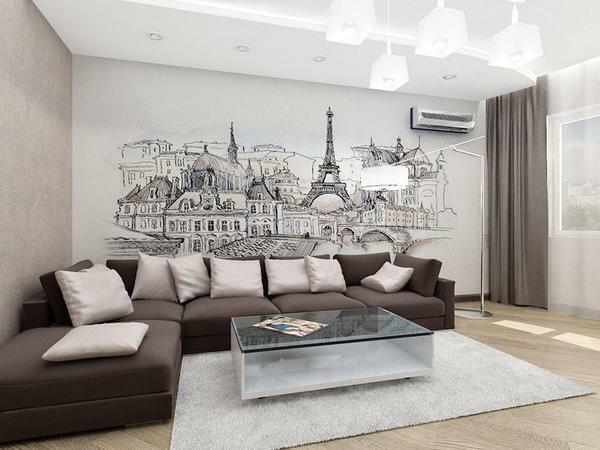 Art painting should be in harmony with the overall color scheme of the room
Art painting should be in harmony with the overall color scheme of the room
If you want to decorate the ceiling and walls in the bedroom, give preference to pastel tones. To paint the ceiling in the bedroom you can use the night sky or any abstractions. This composition will look stylish and unobtrusive.
To decorate a children's room, it is advisable to use compositions of gentle tones. If desired, they can be diluted with some bright accents. To decorate the ceiling and walls, geometric shapes, animal images or abstractions can be used. The painted ceiling can also be used to frame the hallway. Marine motifs in wall and ceiling murals will help to visually expand a small room.
When choosing a composition for walls and ceilings of the hallway, consider a number of nuances:
- If the hallway is narrow, use compositions with small details.
- You can fix a low ceiling if you apply vertical bars and lines.
- When decorating the ceilings in the hallway, give preference to light blue and soft green colors.
- The lack of furniture in the hallway can be compensated if you put a large picture on a light background on the wall.
Artistic painting of walls and ceilings: where to start
Drawing a painted ceiling begins with selecting a sketch for the composition. You can make a schematic drawing yourself or take it ready. For example, for painting the living room you can take advantage of the frescoes of the Sistine Chapel of the famous Italian master Michelangelo.
After selecting the sketch, you need to prepare the surface for painting. First you need to thoroughly clean and wash the walls and ceiling. After this, wait until the water has dried, and proceed with the subsequent operations.
Before starting work, you first need to determine the subject of the drawing and sketch the
Preparation is carried out in 4 stages:
- Using a spatula, remove whitewash and wallpaper from the surface of the ceiling.
- Next, we need to remove deep cracks. To do this, they need to be expanded with a spatula and putty.
- Then apply a primer to the surface. Apply the mixture in several layers. Remember that the temperature in the room should not be below 5 degrees.
- Scratch surface.
Ceiling and wall painting by yourself
Before you start painting, you need to degrease the surface. To do this, you can use white spirit or turpentine. For painting, you will need brushes, capacity, sponge, charcoal, paint.
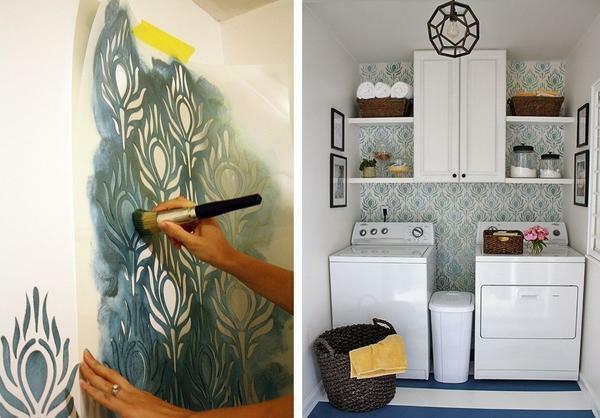 For more accurate picture transfer, you can use a stencil or a projector
For more accurate picture transfer, you can use a stencil or a projector
Algorithm for drawing a picture on the ceiling and walls:
- Install the ladder-platform.
- Drag the sketch to the surface. To do this, use coal. Alternatively, you can use a pencil. If you want to transfer the composition more precisely, use the projector.
- Circle the outline of the drawing.
- Start painting the composition. Start with the design of the background, and only then proceed to decorate the large parts.
- Next, decorate the small details.
If you use acrylic paints, then you must always apply a special varnish. Apply it only after the paint has completely dried. In order for the varnish to spread evenly over the entire surface, use a soft brush. After you have applied the lacquer, polish the ceiling and walls.
Materials for artistic painting
When choosing a paint for painting, you should pay attention to its name and characteristics. For painting it is advisable to use acrylic, tempera and oil paints. You can also use materials with decorative effects.
Experts recommend giving preference to acrylic paints. They do not fade over time and dry up quickly. In addition, acrylic paint does not burn out under the influence of cold and high humidity.
Tempera inks are the best alternative to acrylic. This material does not fade and does not fade with time. It is recommended to give preference to tempera paints based on casein. They quickly dry, insoluble in water and have high adhesion rates.
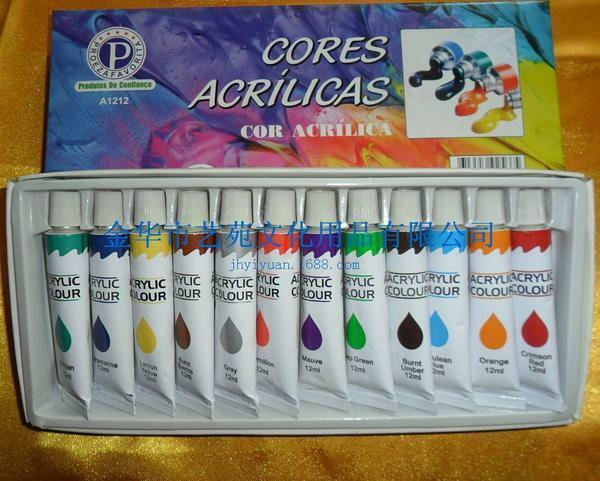 For artistic painting, according to experts, acrylic paints
For artistic painting, according to experts, acrylic paints
are the best. Oil paints are slightly worse than tempera and acrylic paints. Oil paints do not tarnish with time and perfectly fall on any surface.
The drawbacks of oil paints include:
- Oil paints dry for a long time.
- The material is toxic.
- Oil paints crack with time.
Paints with decorative effect are more expensive. Most often used fluorescent paint. This material is good to glow in the dark. Pearl paints are used as an alternative to fluorescent. They allow to bring shine and soft glow of surfaces into the interior. Pearlescent paints have a transparent structure. A feature of this material is the dependence of the color gamut on the viewing angle and the degree of illumination of the room.
Ceiling painting( video)
A wide range of different materials allows you to realize almost any design solution. Art painting harmoniously fit both into the interior of large-sized, so in the interior of small-sized apartments. In order to paint the walls and ceiling in the apartment yourself, you do not have to attend a master class. It is enough to make a qualitative sketch, carefully prepare the surface and carefully apply the drawing. Examples

